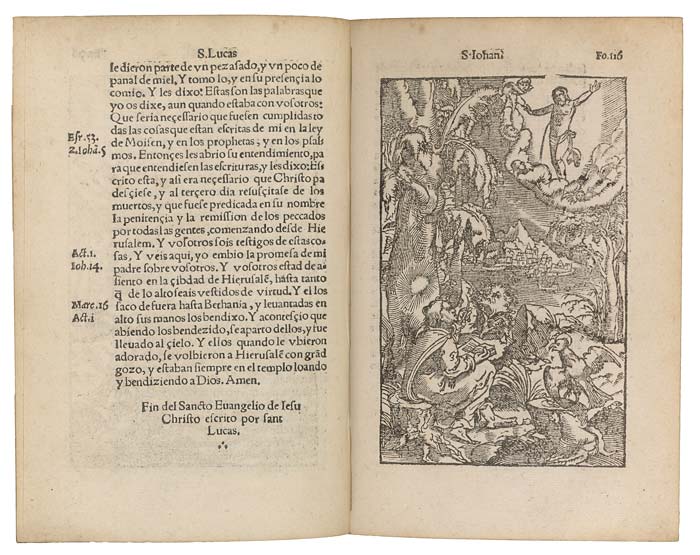
A STANDARD REFERENCE FOR SPANISH ARTISTS
The Church was one of the principal sources of artistic patronage in Spain. During the height of the Counter-Reformation, Spanish artists depicted primarily religious imagery: saints, gospel subjects, and scenes from the life of Christ and the Virgin Mary. This early Spanish translation of the New Testament, published in Antwerp, includes elaborate woodcut illustrations of the four Evangelists. The present opening represents St. John accompanied by his attribute, the eagle, seated in a landscape and experiencing a vision of Christ. Its distinctly Northern style recalls the internationalism of the arts in Spain.
